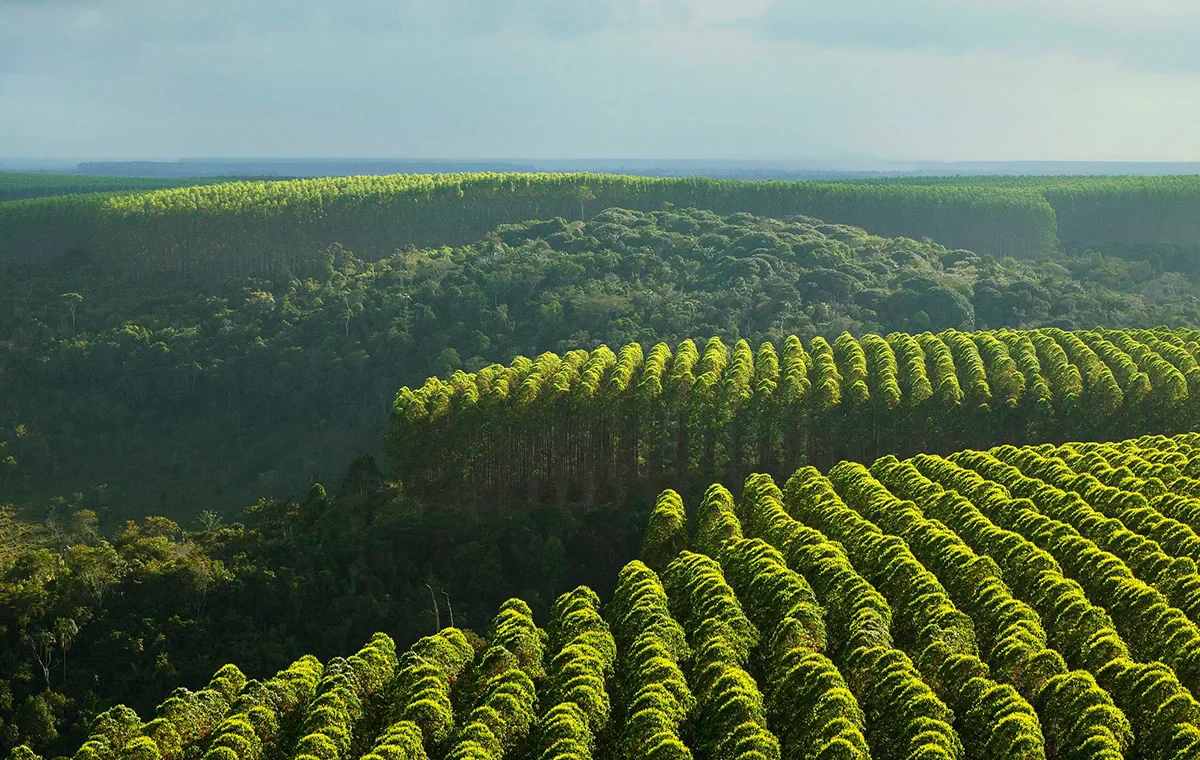In a significant move against climate change, South America is advancing tree plantation efforts.
Forests, essential for absorbing carbon dioxide, play a crucial role in addressing global warming.
The IPCC’s 2018 report highlighted reforestation as key to limiting the rise of global temperature to 1.5°C.
Leading this initiative, especially in Brazil, Argentina, Chile, and Uruguay, South America holds the second-largest area of tree plantations globally.
Despite holding 15% of the world’s tree plantations, these efforts in South America haven’t significantly curbed regional deforestation or reduced greenhouse gas emissions.
The problem lies in their predominant use as monocultures of pine or eucalyptus, grown extensively for industrial purposes.
Such monocultures, while efficient for timber or pulp production, hinder biodiversity and limit carbon sequestration capabilities.

Carlos Nobre, a Brazilian Earth System Scientist, highlights that monocultures do not sequester carbon as natural forests do, mainly because they lack biodiversity.
In South America, 97% of forestry plantations comprise these exotic species, introduced primarily for wood and paper industries.
These plantations, though lucrative, have raised environmental concerns.
They contribute to the spread of diseases and fires, consume large amounts of water, and affect biodiversity.
The Salesian Polytechnic University of Ecuador notes that pine and eucalyptus plantations can endanger biodiversity-rich areas by accelerating local water stress and altering soils.
Removing incentives for forestry industries
Efficiency-focused industry practices in countries like Brazil have led to denser plantations, further escalating risks like forest fires.
Edison García Rivas, a Chilean forestry engineer, points out that while plantations can reduce native forest deforestation, they must be managed sustainably.
Addressing these concerns, South America’s forest restoration projects focus on removing incentives for forestry industries.
Strategies like agroforestry, protecting specific forest areas, and replanting native vegetation are being implemented.
Countries like Brazil, Chile, and Uruguay are shifting towards mixed agricultural and forestry production.
The goal is to establish versatile plantations producing timber and non-timber items, enhancing soil restoration and boosting natural carbon storage.
Re.green in Brazil, aiming to restore 1 million hectares in the Amazon and Atlantic forests, exemplifies ambitious reforestation projects.
State-led initiatives, backed by environmental funds, highlight a commitment to diverse forests that serve as a defense against climate change impacts.

